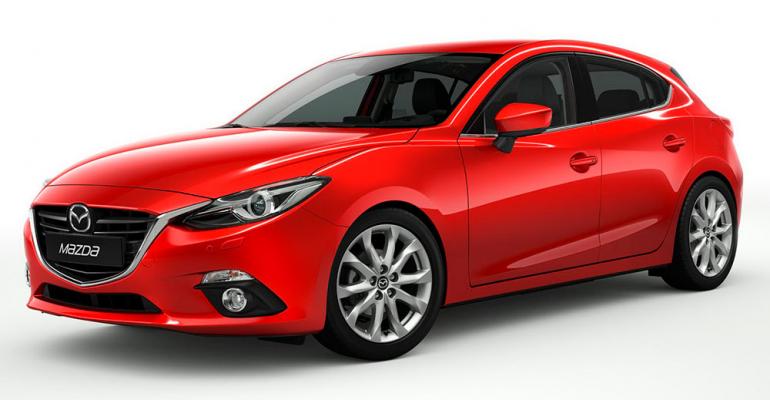CHICAGO – While it just opened last month, Mazda’s newest plant in Salamanca, Mexico, already has established a good reputation, says a top company official.
“(Quality assurance) groups for both Japan and North America are there, and the quality levels that we’re seeing coming out of the plant are just as good as anything coming out of Japan,” Jim O’Sullivan, CEO-Mazda North American Operations, tells WardsAuto in an interview here. “That’s pretty good for an all-new plant, all-new workforce, everything all brand-new from a greenfield site.”
Mass production commenced at the plant, officially Mazda de Mexico Vehicle Operation, on Jan. 7 with the Mazda3 compact car.
Line speed gradually is increasing, and the first Mazda3s from Salamanca should arrive in the U.S. in late February or early March.
“We’re sort of pumping blood through the system for the very first time and testing it, so we’re very slowly and methodically ramping up,” O’Sullivan says.
Later in the year, the automaker will add output of the next-generation Mazda2 subcompact, and in summer 2015 production of a subcompact for Toyota commences.
Also, WardsAuto forecasts Mazda will begin production of a new subcompact CUV at the plant, the CX-3, in July 2015.
Current annual capacity at Salamanca is 140,000 units, but in a couple years’ time output should rise to 270,000, O’Sullivan says, including 50,000 allotted to the Toyota B-car.
For the foreseeable future Mazda will source the Mazda3 from both Salamanca and its Hofu, Japan, No.1 plant. While most of the capacity at the new plant is for North America, some units will be exported, as Mexico’s numerous free-trade agreements make it an attractive manufacturing locale.
The automaker is assembling both engine variants of the Mazda3, the 2.0L and 2.5L 4-cyl., in Salamanca, with engine assembly also on-site.
Despite Mazda having shifted to an almost entirely 4-cyl., piston-engine lineup in the U.S., O’Sullivan says the “pulse” is still alive within the company for rotary engines and hints the Wankel could make a comeback.
“With a company where the rotary is part of our DNA, the R&D guys and gals back (in Japan) are certainly keeping the heartbeat alive a little bit,” he says. “We’ll pull it out when we need to.”
Reports on the likelihood of a next-generation rotary engine from Mazda vary, with it said to be both imminent and off-the-table due to economic factors.
The last Mazda sold with a rotary engine was the RX-8 sports car, which ended production in 2011.
Two years ago, an executive in Mazda’s powertrain division told WardsAuto of a breakthrough next-generation Wankel that was as fuel-efficient as a piston engine, thanks to a reshaping the troichoid housing and ignition improvements, and well-suited to an extended-range electric vehicle.
Mazda late last year introduced a prototype Mazda2 EREV hatchback in Japan. The car’s 0.33L rotary, 75-kW (100-hp) electric motor and lithium-ion batteries combine to give it a maximum 250-mile (402-km) range.
However, O’Sullivan classifies “hybrid-related rotary” work being done in Japan as “more commercial and very small.”





